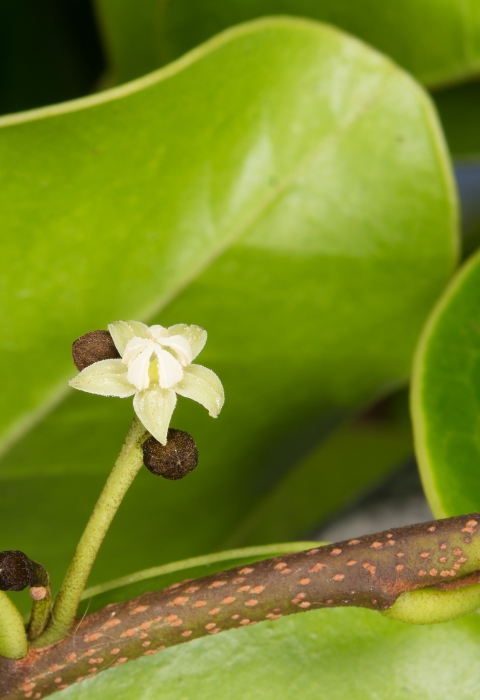Thanks to successful efforts by local and federal partners, the palo de rosa tree is on the path to recovery. The evergreen tree native to Puerto Rico and the Dominican Republic, whose Spanish name describes its pink-colored wood, has shown substantial improvements since it was listed as an endangered species under the Endangered Species Act (ESA) in 1990. Based on a review of the best available scientific and commercial information, the U.S. Fish and Wildlife Service is reclassifying palo de rosa as a threatened species.
“We are proud of the successful implementation of recovery actions for this species, which brings it a step closer to full recovery,” said Leopoldo Miranda-Castro, South Atlantic-Gulf and Mississippi Basin Regional Director. “We look forward to future collaborative work with our partners and private landowners to continue recovery efforts of palo de rosa.”
After an extensive review, the Service found that the palo de rosa no longer fits the ESA’s definition of endangered and should be reclassified as threatened. The ESA defines endangered as “in danger of extinction throughout all or a significant portion of its range” whereas threatened is defined as “likely to become an endangered species within the foreseeable future throughout all or a significant portion of its range.” About 70 percent of the areas where palo de rosa individuals are known to occur are either protected or managed for conservation. In 2004, there were only approximately 191 individuals in 13 wild populations. Now, the number of individuals is estimated to be 1,144 in 66 populations throughout the island.
The Service is also enacting a 4(d) rule under the ESA. This rule will allow for the conservation of palo de rosa by allowing regulatory flexibility under the ESA. As part of the proposed 4(d) rule, the Service could issue permits to carry out otherwise prohibited activities such as: importing or exporting; certain acts related to removing, damaging, and destroying; delivering, receiving, transporting, or shipping in interstate or foreign commerce in the course of commercial activity; selling or offering for sale in interstate or foreign commerce; or collecting plant material (seeds, seedlings, propagules, or cuttings) and natural individuals or those planted to enhance the status of the species in the wild. Additionally, a permit may be issued for the following: scientific purposes, to enhance propagation or survival, for economic hardship, for botanical or horticultural exhibition, for educational purposes, or other purposes consistent with the purposes of the ESA.
The reclassification of the palo de rosa from endangered to threatened will become effective on December 5, 2022. For more information on this reclassification, please visit www.regulations.gov and search for docket number FWS-R4-ES-2020-0059.
For more information on this reclassification, please visit our Frequently Asked Questions.
The mission of the U.S. Fish and Wildlife Service is working with others to conserve, protect, and enhance fish, wildlife, plants, and their habitats for the continuing benefit of the American people. For more information on our work and the people who make it happen, visit www.fws.gov. Connect with our Facebook page atwww.facebook.com/usfwssoutheast, follow our tweets at www.twitter.com/usfwssoutheast, watch our YouTube Channel at http://www.youtube.com/usfws and download photos from our Flickr page at http://www.flickr.com/photos/usfwssoutheast.



